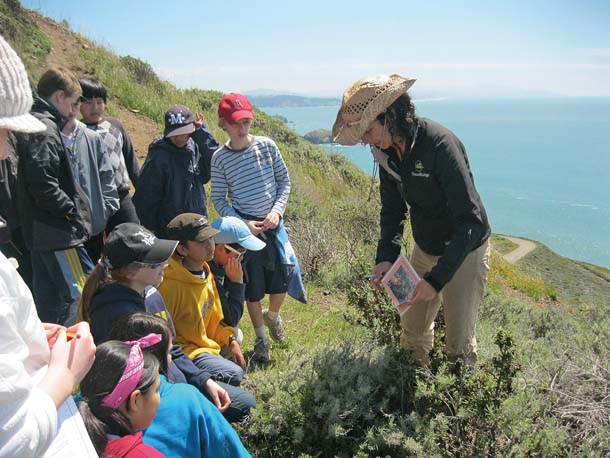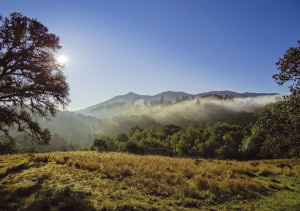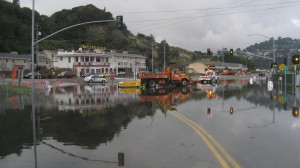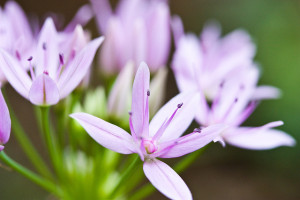On a windswept bluff above the Pacific Ocean, a dozen fourth- and fifth-graders are scattered among monkey flower and coyote bush shrubs. Teams of kids debate questions like how many leaves? How many flowers? By the end of their walk they have filled out a detailed questionnaire for each of 16 plants that had been marked by a round metal tag.
These kids, from Country Club Elementary in San Ramon, have spent four days staying at Fort Cronkhite in the Marin Headlands as part of the NatureBridge environmental field science program in the Golden Gate National Recreation Area. Today, they are helping out with real, grown-up science.
“What they’re doing is collecting data about how plants are changing in our park,” explains their instructor Elisa Litsky, a cheerful woman with balanced measures of authority and playfulness. “It’s like an exciting scavenger hunt.”

The kids on the bluff at Fort Cronkhite are just one facet of the California Phenology Project. The project, which is still in the pilot phase, has mobilized a small army of citizen-scientists to study differences in the timing of plant life cycles. So far, the project has hosted about 50 training sessions throughout California, involving about 600 people. And this is only the beginning. The pilot project is now active in seven parks in California but will eventually expand to 19 National Park Service sites as well as other public and private lands throughout the state.
The science of phenology studies the seasonal cycles in nature, such as when flowers bloom, insects hatch, and birds migrate. Gardeners and naturalists have been dabbling in these details for centuries, but the science of seasonal observation has taken on new urgency and import in the era of climate change.
Since the beginning of the 20th century, winters in the lower 48 states have been getting shorter and warmer on average, according to the Environmental Protection Agency. In the West, the average growing season has increased by three weeks, with most of that change occurring within the last three decades. This means that leaves bud, flowers bloom, and fruits ripen earlier. And plants aren’t the only things changing: Marmots in the Rocky Mountains are emerging earlier from hibernation and some birds have shifted their winter ranges as much as 400 miles to the north since the 1960s. Biologists speculate that the migrations of other species – from the localized journeys of amphibians to the long-distance flights of monarch butterflies – will be affected by climate change.

These changes lead scientists to worry about what they call “phenological mismatches” among species. Species and entire ecosystems depend on complex, intricately interlocked patterns of timing – many of which are poorly understood. Examples include songbirds that have evolved to migrate when the seeds or insects that they feed on are available – but what happens if the birds arrive and the seeds have already dried up? Or if an insect hatches but the flowers it pollinates haven’t bloomed yet? If every species were affected by climatic changes in exactly the same way, there wouldn’t be a problem. But they’re not: Some species might be responding to fixed signals, like the hours of daylight, while others may react to temperature or rainfall – cues that historically were linked but may no longer remain so. What happens when these go out of sync is the kind of question the project seeks to answer. By gathering long-term data sets at multiple sites across the state, scientists can test their models and confirm observed patterns of change.

But gathering information on such a large scale isn’t feasible using traditional methods. No one scientist, agency, or even group of researchers can provide the sheer number of people needed to collect the data needed to create a big-picture phenology database; especially not in an era of shrinking public funding.
This is where the citizen-scientists of the California Phenology Project (CPP) come in. The project is a collaboration between the National Park Service, the University of California Santa Barbara, and the National Phenology Network, which connects the people-power that can be channeled through the parks with the research needs of scientists. By creating a simple checklist that can be completed without specialized training, the project opens up data collection to a huge variety of people–whether they can help for a day or for a year. All the data is funneled back to researchers at UC Santa Barbara, where it is added to a growing database managed by the National Phenology Network, CPP’s older cousin.
“One of the huge benefits of building a citizen-science program is the ability to have more eyes, ears, and hands on the ground,” says Liz Matthews, a postdoctoral associate at UC Santa Barbara who is the sole full-time employee on the project. “We’re able to observe on a scale that simply wouldn’t be possible otherwise.”
Researchers already know that the same species of plant will bud and bloom at different times in different parts of California. Changes in elevation, latitude, and even microclimate – whether a plant is in a shaded ravine versus on the sunny hill a few yards away – can all affect phenology. And these regional differences can be seen right away in a project as big as this one. But observing the response to climate change will take time.
Eventually, CPP aims to document how changes in timing are related to environmental variation across both space and time – and to climate change. Researchers hope to correlate documented plant responses with specific climatic parameters such as temperature and rainfall, which have not been studied much in the western U.S. They will also examine clues as to whether species are at risk because they aren’t adapting well to the changing climate. But those results are several years, or even a decade, away.
In these early stages, the results are less dramatic but still valuable. Greenleaf manzanita in the Sierra foothills forms its flower buds a full year before they open, for example. And coyote bush can put out new leaves all year long – and especially after rainstorms. “It’s not at all what we expected to see,” says Matthews, adding that this type of phenological detail is not well known, even among ecologists, and has yet to be scientifically documented. “It really makes you get to know your local plants and the idiosyncratic patterns they show.”
A lot of the work that went into creating the CPP happened in the planning phase, which began in 2010. This involved developing tools for monitoring, such as data sheets and instructions. And because most phenology research up until now has been done on the East Coast with its distinct seasons, researchers also had to find methods to capture the more subtle phenological changes that happen in California’s mild climate.
One of the most formidable challenges was narrowing the state’s 5,000 plants down to a manageable list of candidates for monitoring. These had to be scientifically relevant, fairly common – and also reasonably straightforward for non-botanists to evaluate. Eventually the list was whittled down to 30 plants statewide, seven of which (coyote bush, coast live oak, blue oak, bay laurel, California buckeye, sticky monkey flower, California poppy) are currently being monitored at the Bay Area sites.
Another challenge is dealing with the errors that can crop up when you’re working with such a large and diverse volunteer labor force. For instance, bulbous green insect galls can look a lot like flower buds, and with tiny coyote bush leaves it’s hard to tell which ones are young and which are mature. Mistakes are bound to creep in, particularly with young kids or one-time volunteers. But, Matthews explains, one of the benefits of having a large amount of data is that a handful of mistakes won’t affect the results.
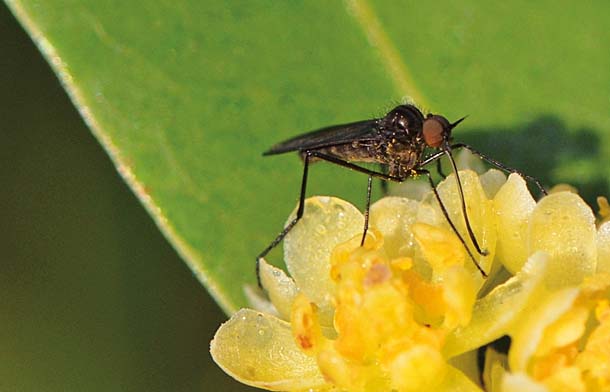
“With every citizen science program you understand that you probably have a higher rate of error,” says Matthews. “For student groups in particular, you’ve just got a ton of teachable moments. In our citizen science projects it’s always a balance between our science goals and our education goals.”
In the end, it’s worth spending a little more time analyzing the data to inspire a new generation of researchers and help people reconnect with the world around them, Matthews says. And it doesn’t hurt if they take home a lesson about climate change at the same time. “People get to see that the flora in their backyard reacts to climate,” she notes. “Then climate change is no longer a story about polar bears in the north — instead it’s, ‘What is the coyote bush doing in my backyard, and why does that matter?'”

At the John Muir National Historic Site in Martinez, three teenagers hike slowly up a muddy trail through mixed oak woodland on Mount Wanda. They are the park’s new interns and this is their first day on the job. For the next nine months, they will hike this trail twice each week, gathering phenology data on five different species: California buckeye, coyote bush, bay laurel, coast live oak, and blue oak.
Today, the three newcomers – Jenisse, Isaac, and Sierra – are being trained by one of their predecessors, Cheyanna, and park natural resource specialist Fernando Villalba. The group’s enthusiasm seems boundless. The two-mile-long hike takes nearly two hours because they stop to examine endless details: the moss at the base of a tree, a mushroom emerging from the soil, the tooth marks on a bay laurel nut that has been half-eaten by a squirrel. Cheyanna has a story to pass on to the new interns about one oak sapling that got trampled by a wayward horse; last year’s interns trimmed its broken branches and nursed it back to health. Now she regards its new green shoots with pride.
This is exactly the sort of relationship with nature that the phenology project hopes to encourage. Many people have never looked closely at a plant before, and even for avid outdoorspeople, data collection is often a new way of looking at nature.
“It’s a lot of fun to see the changes,” says Corny Foster, a spry retiree who is beginning her second year of collecting data on coyote bush at Crissy Field in San Francisco. Foster has been tending the site for over a decade, but now she can describe the quirks of the six bushes that she monitors as if they are old friends. One puts out more new leaves on one side than the other; a second is the prostrate form of the bush that had two flushes of flowers last year. A third lost most of its leaves during big winter storms.
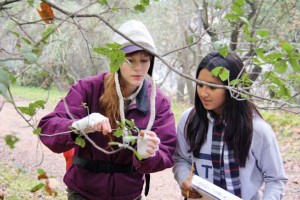
“There was a time when there were still fruit dropping – and new leaves were popping out,” she adds with a laugh. “Things were pretty exciting for a while back in December.”
Whether learning the idiosyncrasies of single plants or just helping out for a day, hundreds of people participating in the CPP are getting to experience the thrill of watching – and recording – the small changes in their local ecosystems. Taken altogether, their work will help tell the story of larger ecological changes around the globe.
If you want to become a citizen scientist with the California Phenology Project, go to www.usanpn.org/cpp/participate. Volunteers can work with a national park nearby or do a project on their own.
Jacoba Charles is a freelance journalist based in the North Bay whose work has appeared in the New York Times, the Point Reyes Light, Bay Nature, and on Salon.com.

